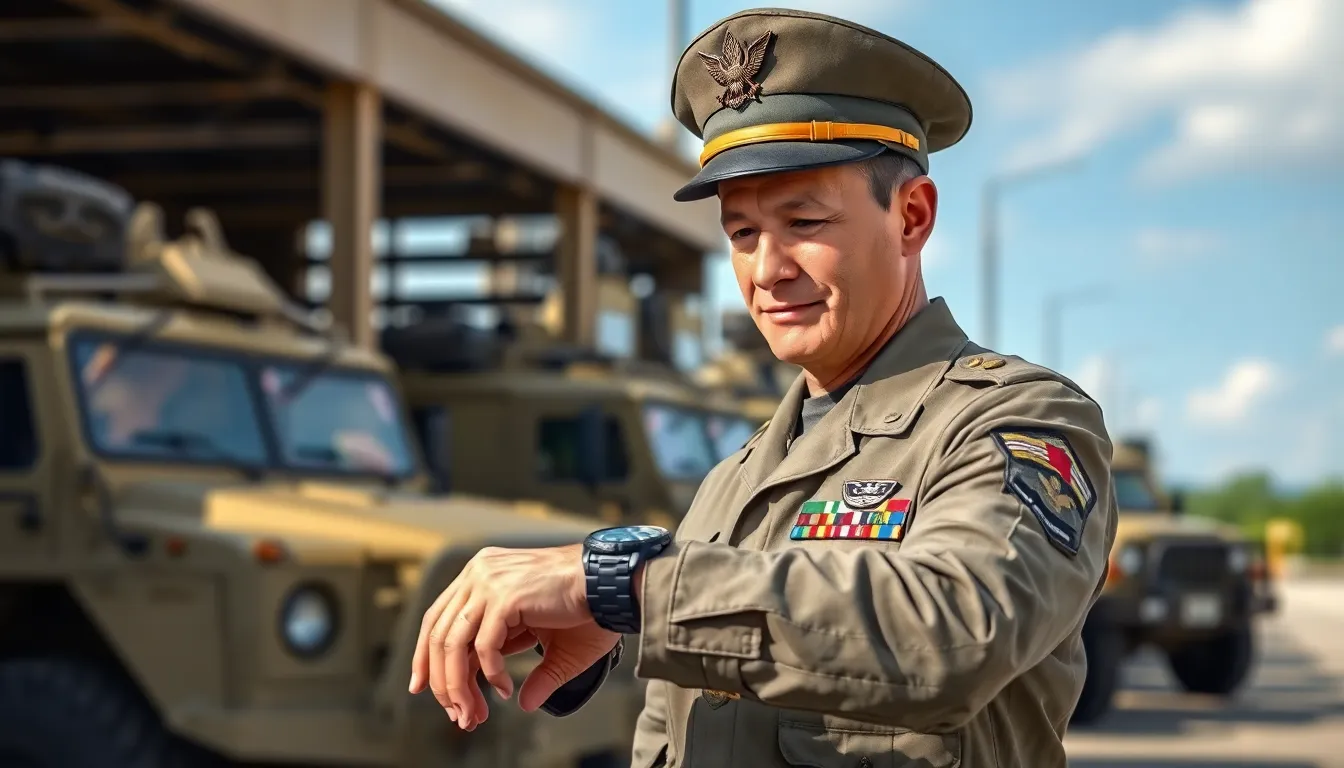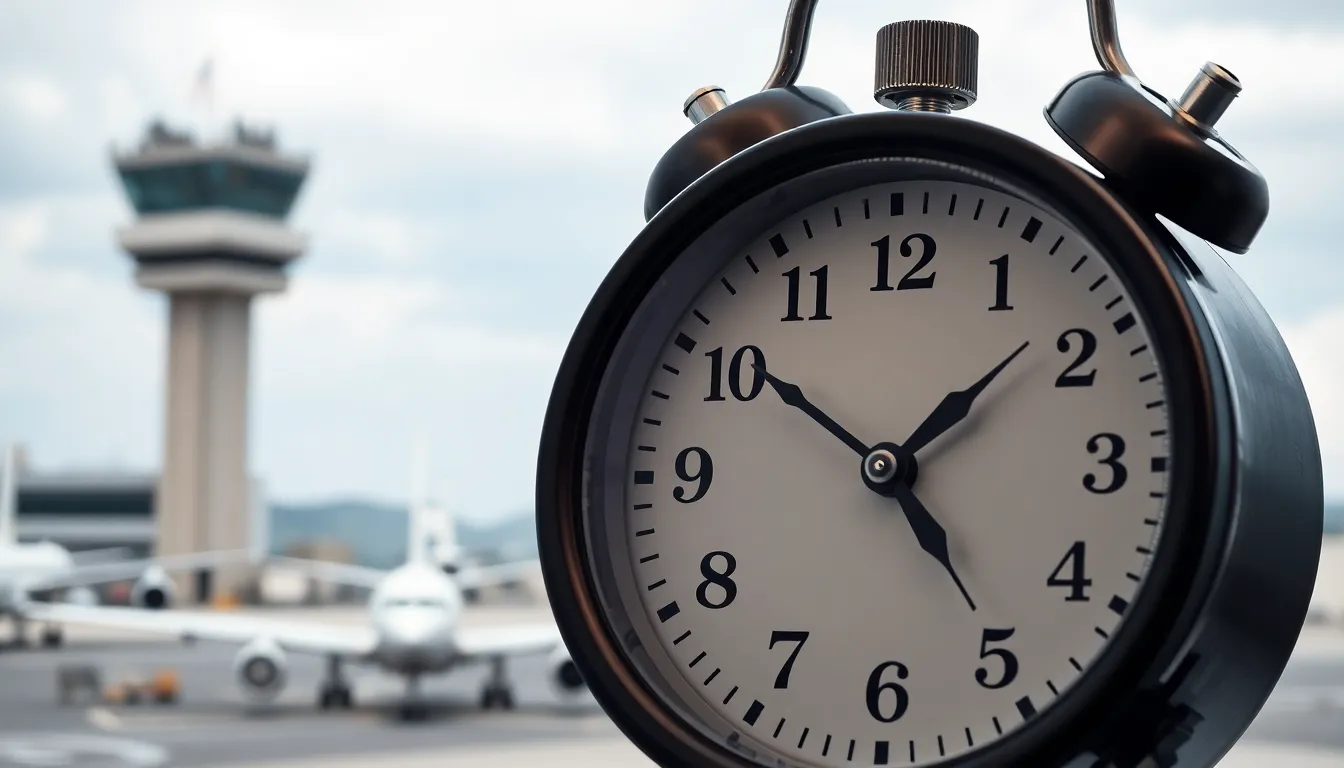Ever found yourself scratching your head over military time? You’re not alone. With its 24-hour clock and seemingly random numbers, military time can feel like a secret code reserved for spies and astronauts. But fear not! Understanding it is easier than you think, and knowing what 1300 hours means is just the tip of the iceberg.
Table of Contents
ToggleUnderstanding Military Time
Military time utilizes a 24-hour format, allowing for precise communication of time without ambiguity. Unlike the traditional 12-hour clock, military time counts hours from 0 to 23. For example, 0000 hours represents midnight, while 1200 hours signifies noon.
Each hour is distinct and eliminates the need for AM or PM designations. The transition from regular to military time occurs after noon, where 1300 refers to 1:00 PM.
To convert, simply subtract 1200 from any number over 1200. This method applies to any military hour in the afternoon or evening. For instance, 1500 hours equals 3:00 PM, showing how straightforward these conversions are.
Understanding military time enhances global communication, especially in professional settings like aviation or military operations. Many find it beneficial for scheduling and coordination, as it minimizes misunderstandings.
Practice aids familiarity with military time conversions. A few examples include 1600 for 4:00 PM and 2100 for 9:00 PM. Engaging with these numbers consistently builds confidence in using military time.
Utilizing charts or reference materials can simplify learning. These tools can deliver instant access to conversions, making military time easier to grasp. As familiarity grows, reliance on conventional time diminishes, paving the way for efficient time management.
Mastery of military time enhances punctuality and is essential for anyone involved in international contexts or industries requiring precise timekeeping.
Converting Military Time to Standard Time

Understanding how to convert military time into standard time is crucial for clarity. The 24-hour format operates differently from the familiar 12-hour format.
Explanation of the 24-Hour Format
Military time includes values from 0000 to 2359. Midnight represents 0000 hours, while noon is indicated as 1200 hours. Any time after 1200 simply adds 12 to the hour number, providing a clear distinction. This system eliminates confusion between AM and PM. For example, 1300 hours signifies 1:00 PM, and 1500 hours indicates 3:00 PM. The format reduces the ambiguity that arises in standard time representations, particularly in contexts requiring precise timing.
Step-by-Step Conversion for 1300
To convert 1300 hours into standard time, start by recognizing that it surpasses 1200. Subtract 1200 from 1300, resulting in 100. The value 100 translates to 1:00 PM in standard time. 1300 hours reflects a straightforward afternoon time. Those unfamiliar with military time can practice this simple subtraction for any hour beyond 1200. This method ensures accurate conversions and promotes confidence in time management.
Practical Examples
Understanding military time involves recognizing various conversions. Here are some useful examples and clarifications.
Other Military Time Conversions
Military time provides clear conversions from standard to military hours. For instance, 0000 hours is midnight, while 0700 denotes 7:00 AM. Additionally, 1200 hours equals noon, and 1800 translates to 6:00 PM. For evening times, 2100 hours corresponds to 9:00 PM. Each conversion follows the same straightforward subtraction principle, making it easy to see how military time aligns with the standard format.
Common Misunderstandings
Many people confuse military time with a 12-hour format. Common issues arise around hours like 1300 and 2300. Some assume 1300 means 1:00 AM, though it actually refers to 1:00 PM. Similarly, 2400 is often mistakenly identified as another hour, despite its representation of midnight at the day’s end. Clarity in these areas helps eliminate confusion and reinforces accurate time communication, especially in professional settings.
Importance of Knowing Military Time
Understanding military time proves essential in various fields. Clarity in communication benefits aviation, military operations, healthcare, and other sectors that operate globally. For these industries, precise timekeeping prevents misunderstandings that could lead to severe consequences.
Professionals frequently rely on the 24-hour format during coordinating schedules and timelines. Recognizing the difference between 1300 hours and 0100 hours eliminates potential scheduling errors. Individuals in military and aviation contexts often encounter military time, making familiarization imperative.
Mastery of this format enhances punctuality. Late arrivals can impact operations, whether in emergency services or transportation sectors. Familiarity with military time leads to improved time management skills.
Daily life can also incorporate military time. Schools or businesses adopting this system streamline events and meetings. Embracing military time fosters efficiency and clear expectations among individuals in diverse settings.
Frequent practice with military time strengthens long-term retention. Utilizing reference materials and conversion charts expedites learning. Practicing these conversions enables individuals to gain confidence in using this timekeeping system effortlessly.
With practice, remembering that 1300 hours corresponds to 1:00 PM becomes second nature. Connecting military time to real-life scenarios enhances understanding and application. A proactive approach to learning can ultimately lead to a more efficient daily routine.
Mastering military time can significantly enhance time management skills and communication clarity. Understanding that 1300 hours translates to 1:00 PM is just one step in navigating this efficient timekeeping system. As individuals become more familiar with military time, they’ll find it easier to coordinate schedules in various professional environments.
Regular practice and real-life applications will strengthen their grasp of this format. Embracing military time not only streamlines daily routines but also fosters greater punctuality and reduces misunderstandings. With these skills, anyone can confidently adapt to the demands of modern communication.








